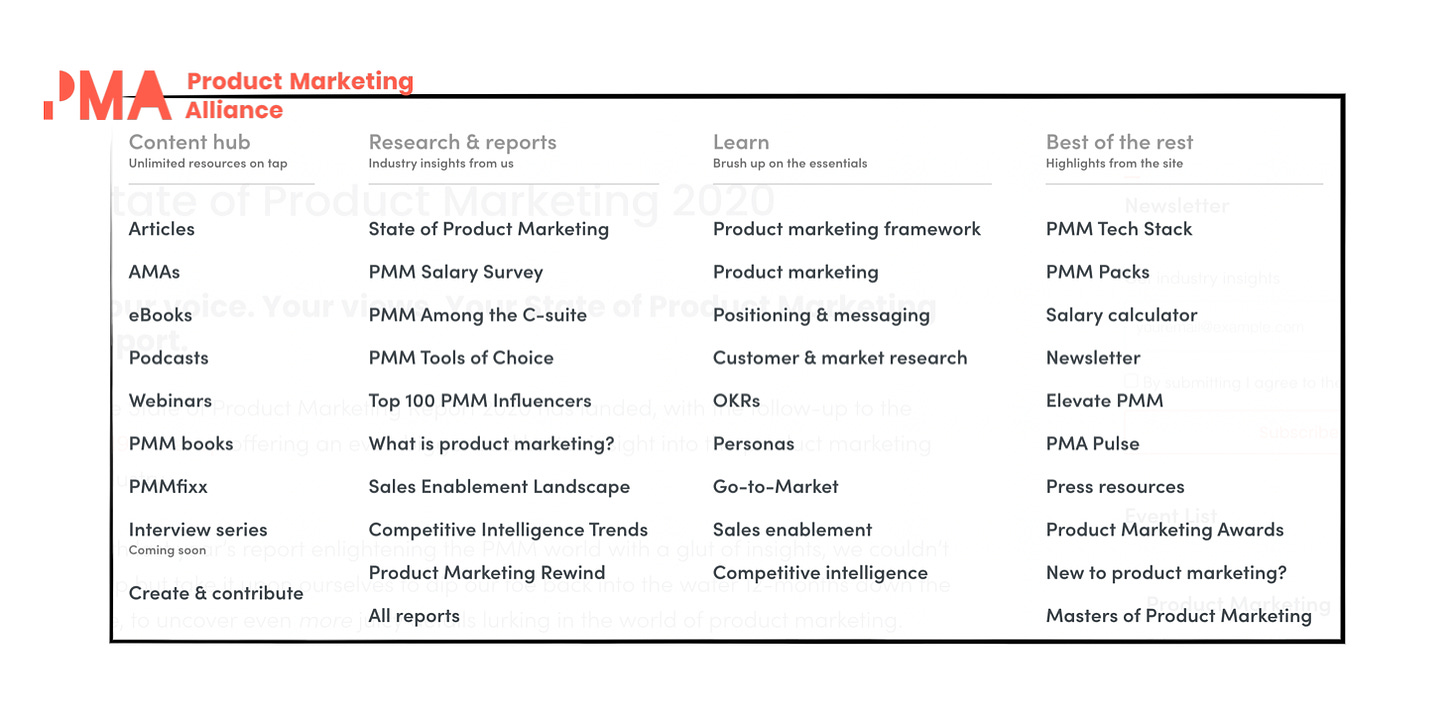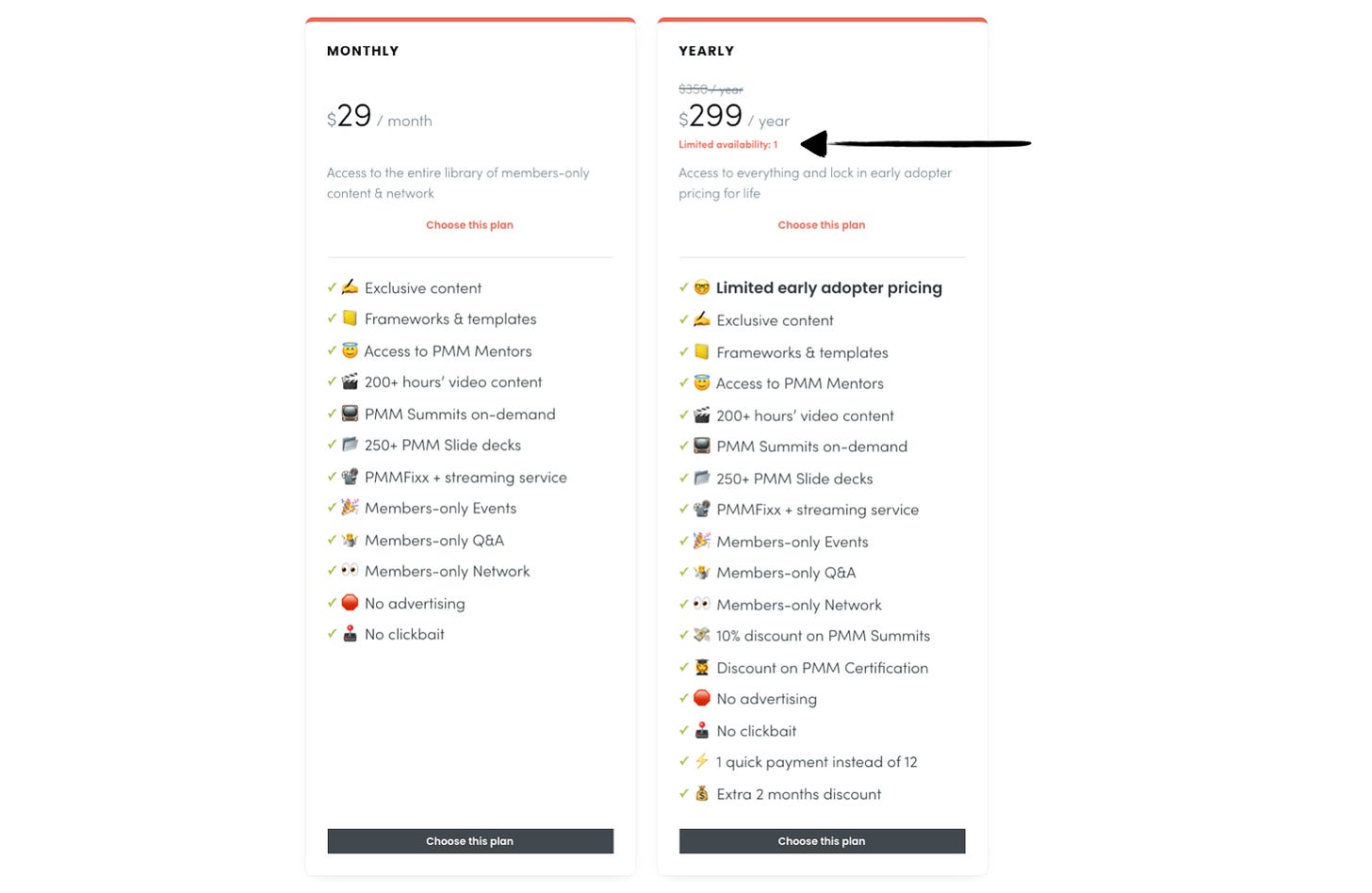SaaS Pricing is hard. PricingSaaS is your cheat code.
Monitor competitors, track real-time benchmarks, discover new strategies, and more.
Community is one of those things many brands try to do, but often struggle to do well.
Part of that might be because not everyone shares the same definition of community. While I would never claim to know that elusive definition, at the very least I would posit that for a brand to foster community, the dialogue has to be 3-Dimensional.
What I mean by that is that communication can’t just flow from Brand-to-Member, but also Member-to-Brand, and perhaps most importantly, Member-to-Member.
Achieving that third dimension is the hardest part, but once you have members interacting without you, I believe you’ve reached some semblance of the promised land.
As I've been building Good Better Best, I've joined a number of digital communities to meet people working on pricing. The most engaged, by far, is Product Marketing Alliance. I've been impressed with the team’s consistent production of high-quality content, and the level of engagement from members, both with the PMA brand, and each other.
Today, I want to move beyond the buzzword and share tactics and strategies to build and monetize a community effectively.
Richard King has built PMA from the ground up into the premier destination for Product Marketing resources. We chatted last week, and he took me through PMA’s history, highlighting some of his biggest learnings.
Based on his feedback, I’ve structured the following as a roadmap of sorts, with strategies to consider at each step along the way, from getting started, to building an audience, and finally, driving free to paid conversion.
Let’s start from the beginning…
1. Scratch your own itch
Richard was working in Product Management when he found he was accidentally doing Product Marketing as well. As Product Management became more technical and engineering-focused, he found himself drawn to the narrative design and story-telling components of product growth.
As he and his wife, Josie, started digging deeper, they realized that Product Marketing was drastically underserved as a discipline and started thinking about how they could fill that gap. Josie had a background in live events, and Richard could see a clear opportunity to host an event for Product Marketing professionals. They used their experience to launch Product Marketing World in 2019.
However, as Richard spoke to Product Marketing leaders, he realized there was a bigger opportunity. Because the discipline sits at the intersection of Product and Marketing, Product Marketers were pulling from 5-7 places to figure out how to do their job on a day-to-day basis. This insight led him to a new goal: creating a single destination where Product Marketing Managers could find everything they need to do their job.
2. Pull from personal experience to build what you want
To serve this need in the market, Richard started with a Slack group. They built the channel independent of their event, making it free from any commercial attachments, drawing a clear line between the revenue goals of the event and the community benefits of the Slack group.
Having been a member of several Slack communities centered around Product Management and Developers, Richard had seen firsthand how they can be hit or miss. Specifically, he noticed they can become especially noisy when members are allowed to litter channels with self-promotion.
Given that context, from the beginning, he set out to make sure PMA was different. He implemented house rules to ensure people weren't spamming the community and was strict with enforcement. Simply put, if a member broke the rules, they were asked to leave, even if it came at the expense of early growth.
In part due to this focus on quality over quantity, the Slack group wasn’t an immediate rocket-ship. It was a slow-burner, and eventually, at ~400 people, it felt like they reached a tipping point for sustained engagement.
3. Use your chosen platform to your advantage
Richard knew that even though PMA was smaller than other communities, the quality and consistency of the dialogue between members was really high. He wanted new members to understand that from the get-go.
Often, Slack community managers turn off the analytics function or make it private to hide low engagement. Instead, Richard made analytics public, so members could look at the numbers and understand the high percentage of active members.
Along the way, Richard realized the Slack community was becoming its own content engine. The strict rules and emphasis on quality over quantity ensured the group was having high-signal conversations. The dialogue happening in the community became some of the best content in the world of Product Marketing. To capture this content, Richard started doing weekly summaries of the best conversations happening across the community.
These summaries served two key purposes:
Slack archives old messages, so by summarizing the best content every week, Richard made sure they wouldn't lose any of the gold that was surfacing across their channels.
Richard immediately realized that members loved the summaries. While many were too busy to read every thread, they loved being able to read one post to get them up to speed.
4. Lookout for shifts in member behavior
The Slack community became the backbone of the Product Marketing Alliance production function. However, after reaching ~4k members, it became clear that the influx of traffic inevitably led to a noisier experience.
Building out these weekly summaries gave Richard and the team a backlog to start building a fully-formed content engine. They started a newsletter and made a concerted effort to build a destination with original content for people that didn't want to use Slack.
They quickly realized members were visiting the website instead of Slack, and making requests for specific content. Specifically, members wanted tools they could use in their day-to-day, like templates and frameworks. In talking to members, Richard found they were willing to pay for these resources as well, which led him to pursue PMA full time.
5. Utilize high-quality free content to drive monetization
Upon launching the paid membership, Richard leveraged two big ideas to attract new visitors that would fuel their paid subscription funnel.
First, he made a point to create high-quality free content. Specifically, the PMA team created the State of Product Marketing Report, an annual collection of curated in-depth research that provides a ton of value, and ended up driving a ton of paid memberships.
Second, when Medium switched to a paid model, many writers saw their audience diminish. Richard proactively reached out to writers who posted about Product Marketing and got them posting articles with PMA. This helped the writers build an engaged audience, and gave PMA more high-quality free content to offer members.
6. Understand where paid members ascribe value
Upon joining PMA, the first thing you'll notice is the vast library of content and resources.
Across their offering, Richard has found 3 things that deliver the most value:
Exclusive Content
Templates and Frameworks
Mentorship
He also found that members loved having one place to go for everything, and were willing to pay the $20 monthly fee, especially since many of them were able to expense the cost.
Richard openly admits that he wasn't sure how to price the paid PMA membership. Since there weren't many similar communities, and they didn't have any internal pricing data, they started the subscription at $20 per month or $199 for the year.
Over time, Richard and the team have added more content, raising prices accordingly. They’ve found the market to be willing to pay the higher rates, but have found their subscription mix has shifted towards more monthly than annual subscribers.
As they noticed this happening, they added more value to the annual option and introduced a new lever to drive upgrades: exclusivity.
The limited number of spots for the Annual plan has helped push buyers over the line.
Summary: Richard’s 3 Keys to Building Community
Thinking back on what’s made Product Marketing Alliance work, Richard believes there have been 3 keys to their success.
To build a truly sustainable community there has to be consistent dialogue. While events can play a key role, Richard believes there has to be a shared space where members can engage in the meantime.
To keep members engaged, it’s critical to serve members over time, which means being ready when their needs change. Richard thinks about the PMA subscriber journey from Junior Product Marketing Manager up to VP, crafting content and experiences that span the lifecycle. The Mentorship function plays a key role here - helping drive engagement between members by pairing lower-level Product Marketers with experienced Leaders.
Lastly, because consistency is key, it’s worth dedicating a full-time employee to community. Looking out on the community landscape, Richard sees a lot of companies doing bits and pieces - maybe a Slack group or a dedicated website, but believes connecting the dots is critical, and to do so effectively, someone should be managing community as their full-time job.
The Future of Community
Currently, Richard considers the biggest challenge with community to be measuring ROI. However, he believes that will come soon, and when it does, there will be two major downstream implications:
First, Community Leader will become a more valuable position within an organization. Much like Product Marketing, Community will become a recognized function where organizations will dedicate resources.
Second, similar to Product-Led Growth taking off in recent years, Community-Led Growth will become a more accepted path to building a successful company.
Chatting with Richard was a fascinating look inside a thriving community. If you are in Product Marketing or interested in the discipline, I can’t recommend PMA enough.
Enjoying Good Better Best?
If you enjoyed this post, I’d love it if you hit the like button up top, so I know which posts are resonating most!







